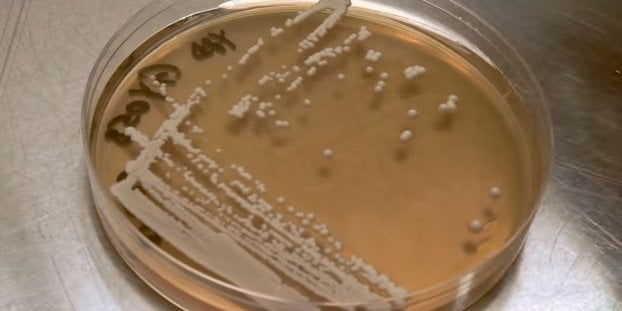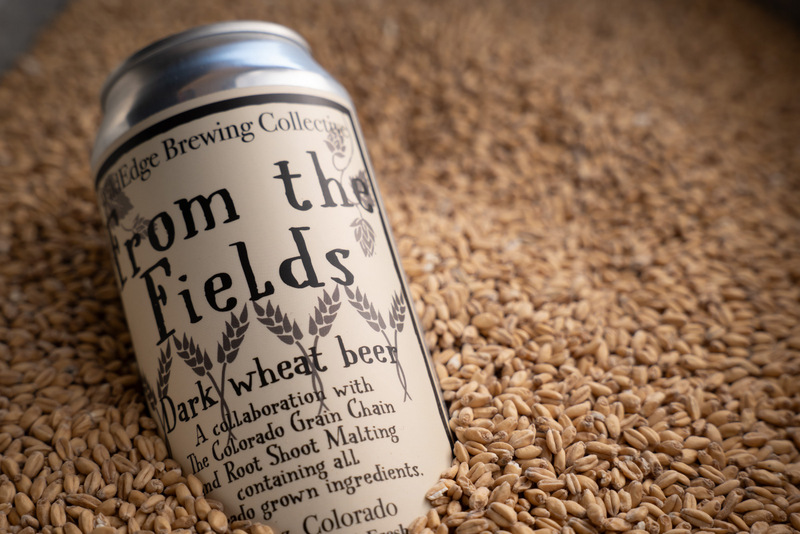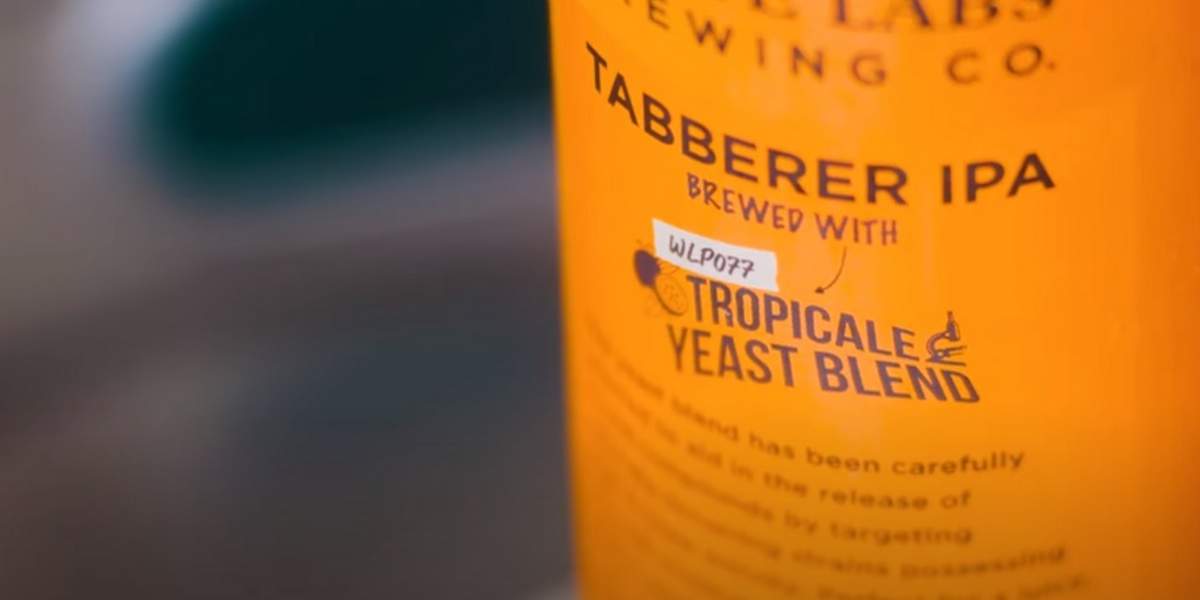When people want to know “what’s next?” in craft beer, we point to yeast innovation and experimentation, where we are only just now scratching the surface. Some purists bristle at how far brewers are pushing these boundaries, maybe stretching the definition of “beer” along the way, but to us, that’s exciting. Isn’t experimentation one of the main characteristics of craft beer?
When we caught wind of a “yeast-only sour beer produced at a production scale,” well, we wanted the entire backstory.
Background: Cleveland’s Saucy Brew Works worked with Matt Bochman and Rob Caputo at Wild Pitch Yeast to pioneer a new strain of yeast that makes lactic acid called YH72. Wild Pitch knew there would be skeptics, so they went through an extensive process to validate that YH72 is the real deal (detailed below). Read this again: There are no bacteria generating the lactic acid. The first production-scale beer to use YH72 is Saucy Brew Works’ The Drifter, a sour blonde ale that is acidic and fruit intensive.
“For us, this beer has a very clean and crisp sourness,” noted Eric Anderson, brewmaster at Saucy Brew Works. “More notes than a kettle sour would for sure. There’s a soft crackery malt backbone with a touch of tropical hop character. The round lactic acid character is truly the star of the show — it ties together the malt and has some lightly stone fruit and peach esters the yeast produced.”
The end result is intriguing but made even more so when you consider all of the work and experimentation that went into getting here.
Developing YH72
Getting any yeast ready for production-scale brewing is exhausting, taking several months: a week or two to isolate and identify the yeast, two weeks to ferment beer, two weeks to bottle condition (i.e., carbonate) the beer, a sensory analysis session and then another round of fermentation/bottle conditioning/sensory to make sure the strain repeats.
But even that is getting ahead of the story of YH72, which starts with Matt Bochman, co-founder of Wild Pitch Yeast and an assistant professor in the Molecular and Cellular Biochemistry Department at Indiana University. In collaboration with Indiana craft brewers Rob Caputo and Justin Miller, Bochman’s lab has been bioprospecting for wild yeasts with desirable brewing characteristics, brewing test batches of beer and conducting analyses of the final products. That led to the founding of Wild Pitch Yeast.
What does “bio-prospecting” look like, exactly? Well, the lab captured about 300 wild yeast strains, then brewed 300 test beers. Of these, dozens proved suitable for brewing beer, but strains of six species specifically made sour beers.
The yeast in question, YH72, came from a sample of ash bark from Bochman’s dad’s backyard. He brought it back to the lab, enriched for yeast, used strain #72 for brewing beer and discovered that it made delicious flavors.
“This is an idea that’s been in the works for a long time,” Bochman told CBB. “It’s driven by a love of beer and a desire to use science to bring new ingredients to brewers — ingredients that create new flavors, improve the brewing process and solve production challenges.”
The Wild Yeast team has confirmed that YH72 is actually a yeast process and not bacterial contamination using a variety of tests, including:
- DNA sequencing
- Enzymatic assays
- Microscopy
- Gas chromatography — mass spectrometry (GCMS)
- Nuclear magnetic resonance spectroscopy (NMR spectroscopy)
“We have modern science behind us proving this is only yeast,” Bochman said. “We did lots of things [including brewing beer under a variety of conditions], but these are the main tests we used…
- After we purified the YH72 yeast strain from the sample of tree bark, we amplified a small portion of its DNA using the polymerase chain reaction [PCR] and sent that DNA sequencing. Comparing that sequence to a national database helped us to determine that YH72 is a strain of the yeast Hanseniaspora vineae [~3 days start to finish].
- The enzymatic assay specifically detects the production of lactic acid, which sours beer. Pure YH72 culture yielded a positive signal in the assay [in this case, the appearance of a dark purple color] [~2 days start to finish].
- Using traditional microscopy of the yeast before and after brewing, we observed only yeast cells with no bacterial contamination [10 minutes].
- GCMS is a powerful separation and analysis technique that allowed us to separate out the organic acids in the beer and determine that lactic acid was specifically present at high levels [~2 days].
- Similarly, NMR can be used to look at a complex mixture of things [like beer] and determine if a particular compound is present and how much is there. These analyses were performed by our friends at Process NMR Associates and indicated that YH72 makes the same types and amounts of organic compounds that a typical ale yeast does, but YH72 also makes a ton of lactic acid.”
Wild Pitch has collaborated with small scale brewing companies using these strains, but Saucy Brew Works was the first to take the idea and run with it on a large scale. Bochman says that the yeast is available on a limited basis because Wild Pitch Yeast isn’t set up for large-scale production of yeast yet. That may change based on some conversations with Saucy Brew Works and a few others.
Brewing with YH72
Brewing The Drifter, Anderson said, is just like any brewing process — the same process of wort production, fermentation, filtration, but the end result is completely different. The ingredients are what makes this different because, again, the Drifter is a yeast-only sour. This does lead to some small exceptions, according to Anderson:
- The fermentation temperature is a bit higher than the average ale yeast (80F).
- The fermentation was a bit slow to start, taking around 24 hours before much activity was noticed.
- The pH of the wort/beer dropped rapidly compared to a normal fermentation. In fact, the pH dropped to 3.7 before much if any ethanol was produced.
The basic act of making this beer is maybe not too notable, but taking the jump to making 18 bbls of it is a huge (risky) deal.
“We grew it in our house yeast propagation unit as we would with any other yeast. This involves providing the yeast low gravity wort [10 plato] and cycling sterile air through the mixture on cycles of three minutes air, three minutes rest. After 48 hours, the cell count had reached its peak, and we pitched the yeast,” Anderson told us. “The big hurdle, so-to-speak, is more of the risk of making 18 barrels of a beer that’s never existed before. So, it’s the willingness to stick your neck out and try something completely different. Making 5 gallons as a trial is one thing, but yeast behaves differently in 18-barrel tanks. The only way to see what the yeast could do on a production scale was to dive head first into the pool.”
Did this change the per barrel economics to produce The Drifter in any way?
“With a lactic-acid producing yeast like YH72, fermentation duration was a bit longer than usual. If we’re comparing this to kettle souring, we wouldn’t say time saving is true or relevant. Economically, this yeast is a real-life saver because there is no risk of potential infection by lactic-acid producing bacteria,” Anderson said.
The bigger implications of YH72
Right now, brewers bring in yeast from a limited number of sources. This process allows for local sourcing of yeast — as you’d do with hops, barley, fruit and other ingredients. For Saucy Brew Works, they see The Drifter as the first in a line of experimental beers using this strain or others that they find right in their backyard.
YH72 and other lacto yeasts are making their way into Saucy’s rotation as we speak. The Drifter Sour Blonde was the first of a series and was also a fairly simple wort that allowed the yeast character to come to the front of the stage. Next comes a Sour Red and plans for lacto yeast IPAs, stouts and several other new creations.
“Brewing will evolve if there’s a synergy between brewers and academia. It’s going to take research from guys like Matt and Rob at Wild Pitch Yeast and implementation through brewers like Saucy to make this thing actually advance,” Anderson said. “We have the chance to revolutionize one of four major ingredients, yeast, and that’s what we’re going to do.”





Leave a Reply
You must be logged in to post a comment.